'Books are for everyone': Inside Penguin's hidden archive
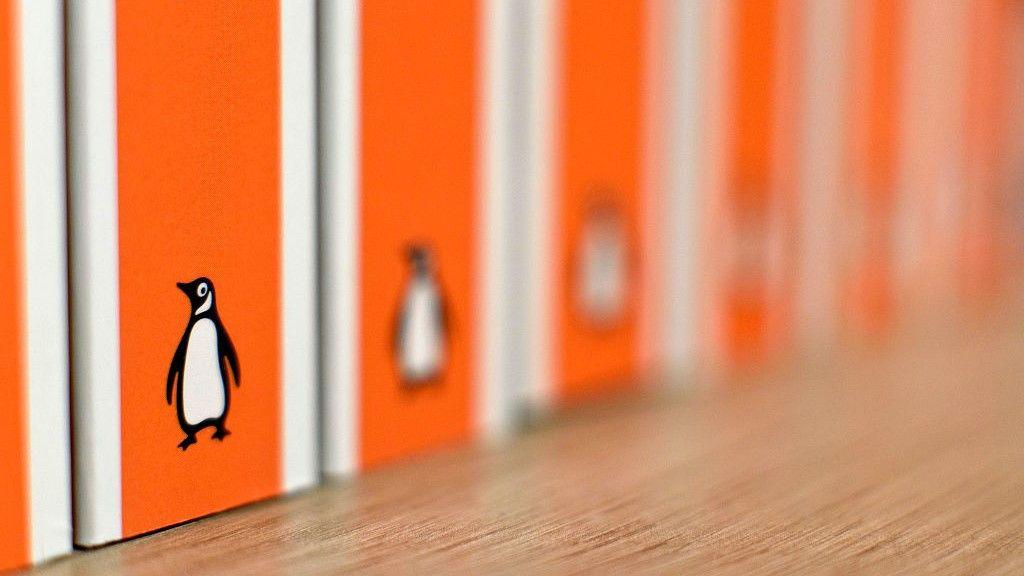
Penguin's archive charts the publisher's 90-year history and holds some even older items
- Published
Deep within the warehouse capital of the country lies a literature lover's treasure trove.
Hidden from view, among the "mega-sheds" and supply chain businesses of Northamptonshire, there is no hint of the historical wonders inside.
But this non-descript warehouse on the outskirts of Rushden is home to the Penguin Random House UK Library and Archive.
It features 1.5 million books by some of the biggest names in literature, including Agatha Christie, Ernest Hemingway, Roald Dahl and Jilly Cooper, as well as many other documents relating to the world-famous publisher, now celebrating its 90th birthday.

Senior library and archive assistant Nicki Carter has worked at the archive for seven years
"It's pretty overwhelming. I love it, though," says Nicki Carter, senior library and archive assistant, who joined the collection seven years ago.
"I've always been an avid reader. I moved to this area in my early teens and I'd always driven past this building and wondered what was inside".
Her dream to work in publishing came true years later when she left university and decided to check the publisher's website.
"There happened to be a job going and considering there are only five roles here, it was very fortuitous timing," she says.
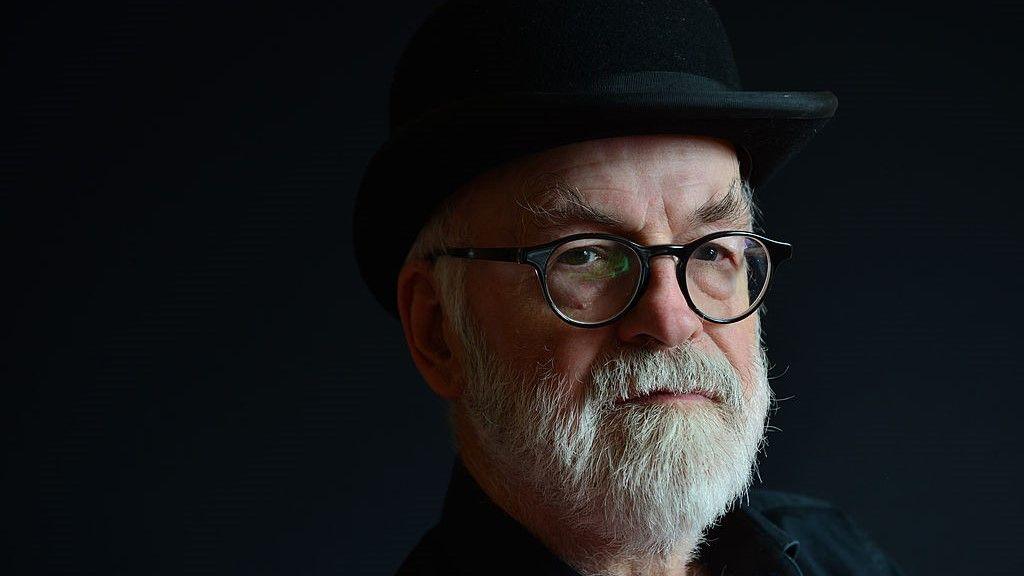
Terry Pratchett is among the authors whose work is stored at the archive
Her favourite part of the archive? It's the Terry Pratchett collection, devoted to the work of the bestselling author of the Discworld series.
"I love Terry Pratchett," she says.
"We've got the original cover designs. And then we have the more modern ones where we've come out with these beautiful clothbound classics.
"So, if you're a fan, this is the place to be; this is the place to spend your time."
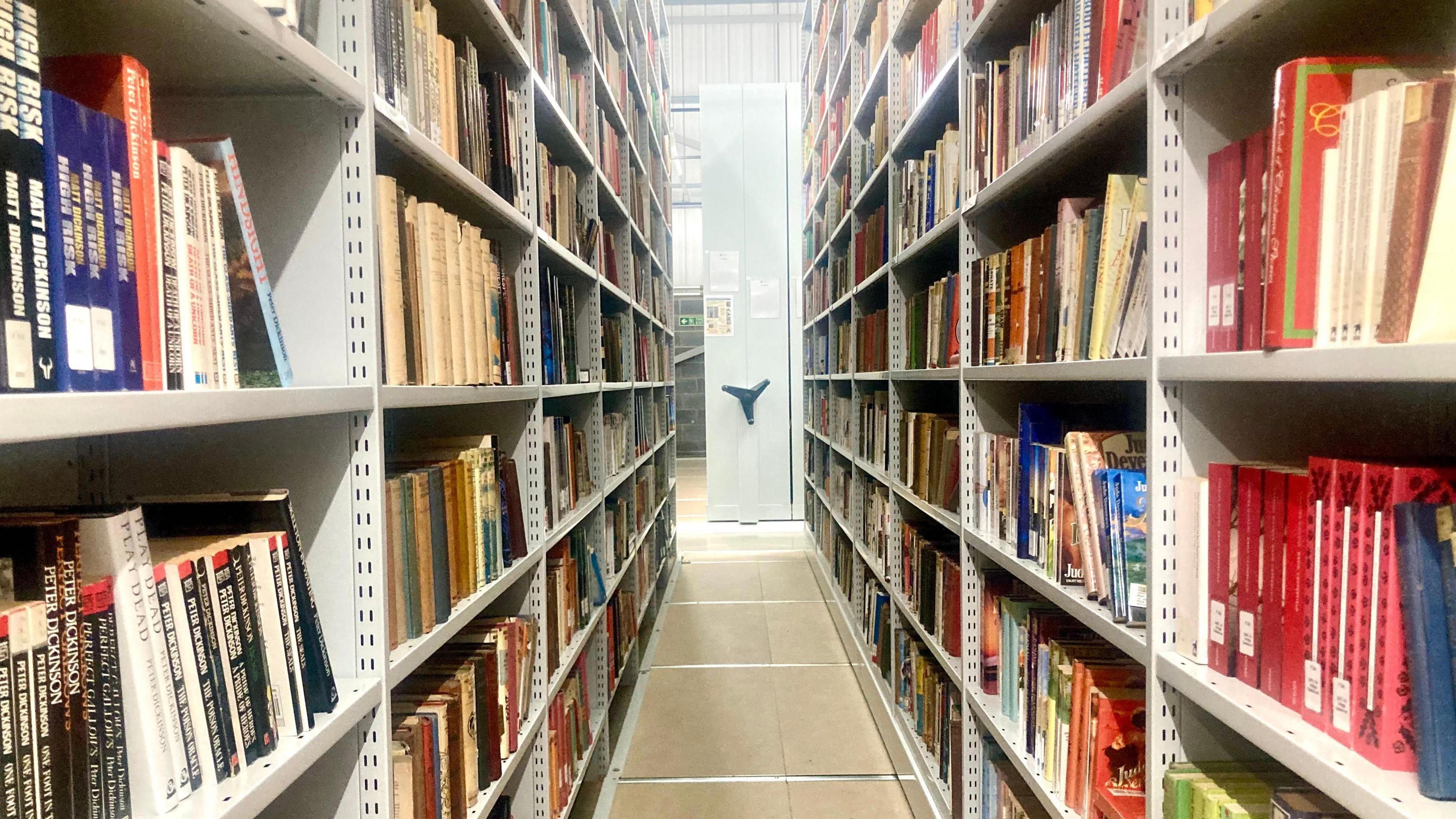
Books are stored in banks of floor-to-ceiling shelves, known as rolling stacks
The archive, which contains copies of every book ever published by the firm, moved to its current location in 2017, with its system of static, rolling and electric stacks doubling and tripling library space as and when needed.
In addition to cataloguing the books, the team answer queries from researchers, university students and authors, as well as investigating the history of the company.
The oldest book in its collection is the 1739 publication of Joe Miller's Jests.
But it's not just books that are stored here.
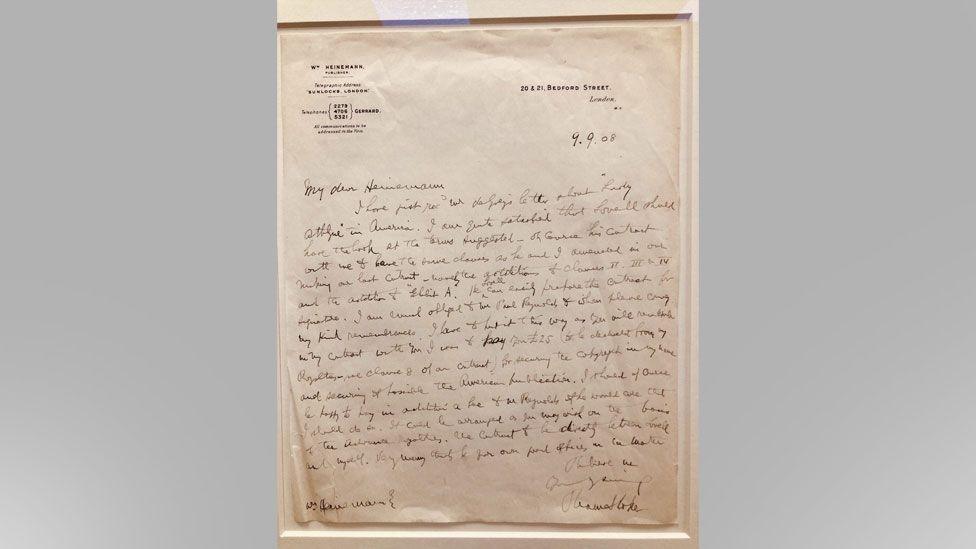
The archive contains a letter from Dracula author Bram Stoker to his publisher in which he discusses his contract and royalty fees
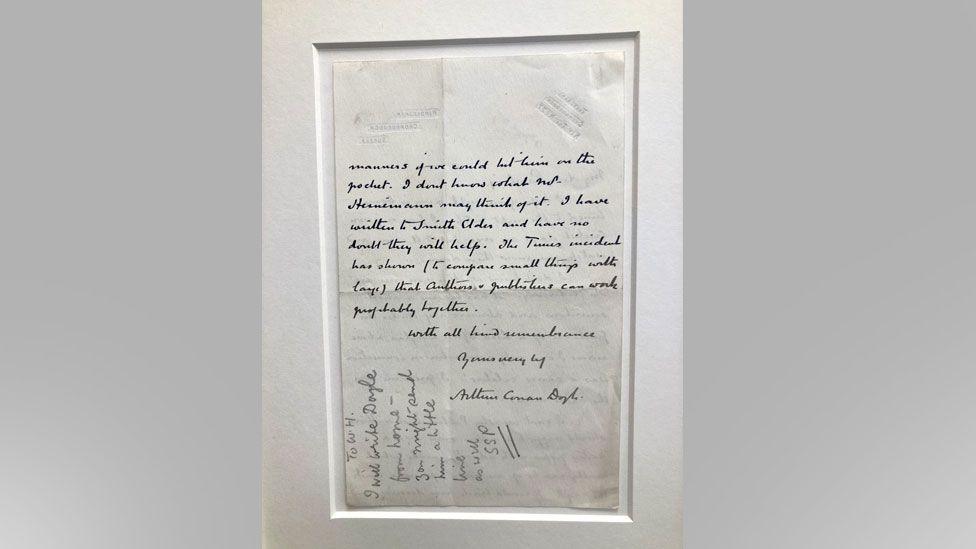
A letter from Sherlock Holmes author Sir Arthur Conan Doyle is another of its items
"I'm really fascinated by our contract collections," says Esmé Bonner, library and archive assistant.
"Contracts can be incredibly dry but they help us discover the history that led us from initial conversation with author to book.
"We have a lot of capsule history here that you wouldn't find anywhere else.
"We have some fantastic correspondence with Bram Stoker around his publications. We have a lot of letters from Graham Greene, George Bernard Shaw."
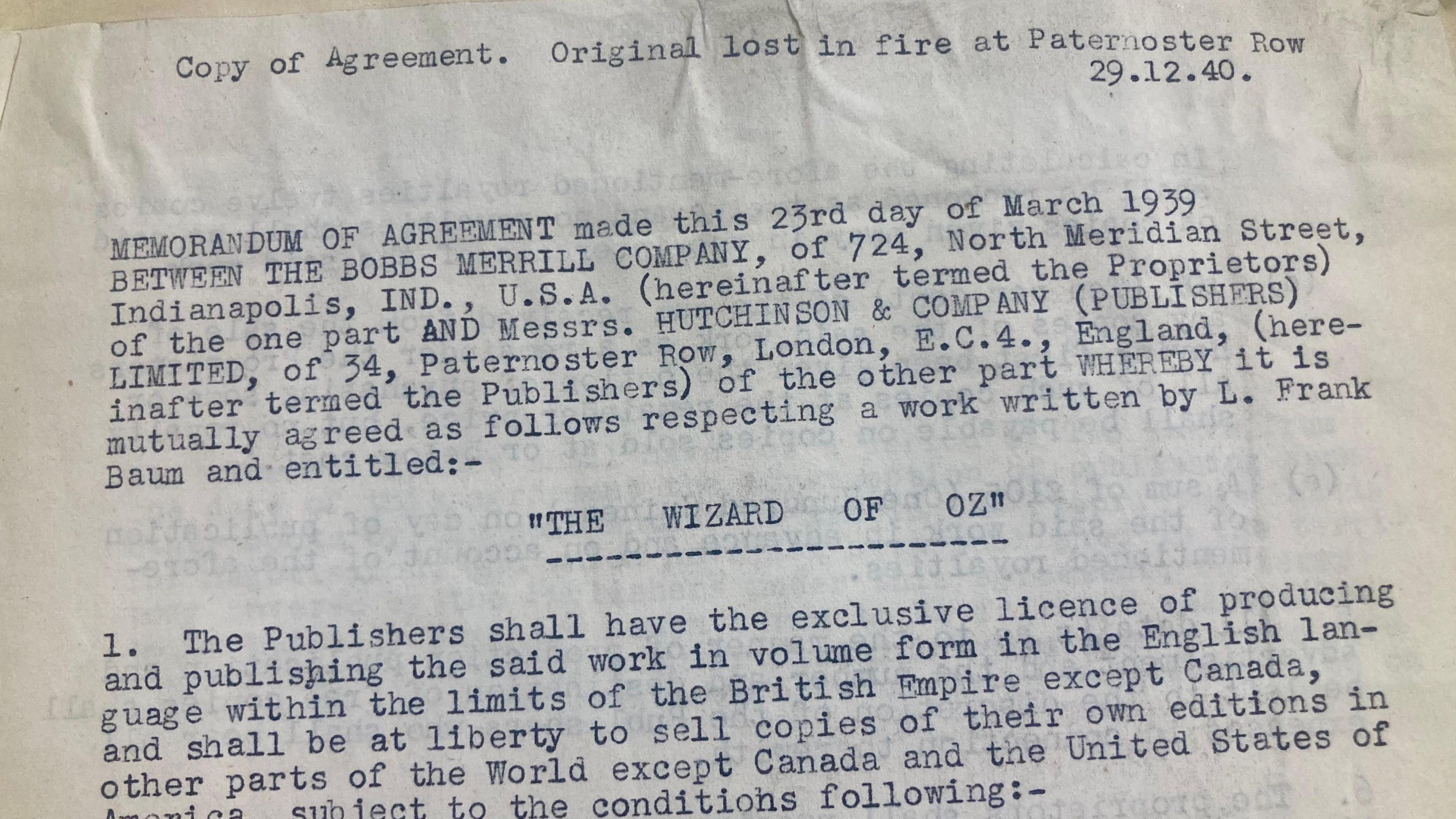
The archive contains a copy of a publishing contract for The Wizard of Oz
One of the archive's most prized exhibits is a copy of the publishing contract for L. Frank Baum's The Wizard of Oz. The original document was destroyed during the Blitz.
"We're very cognisant of how much history we hold here and how that history intersects with Britain and with English literature," she says.
"Penguin massively upset the publishing process and we're incredibly fortunate it was so successful."
How Penguin became a publishing superpower
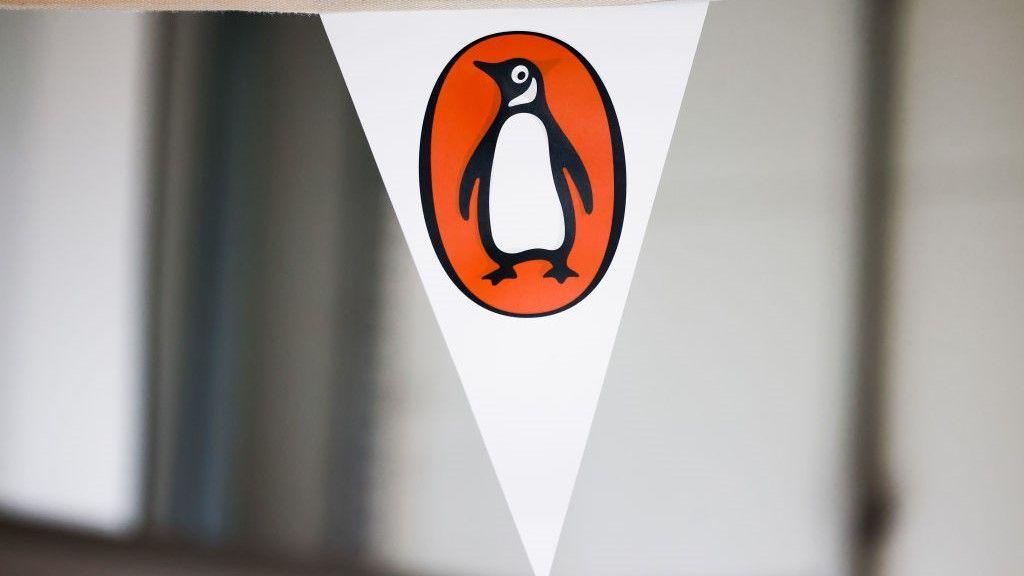
Penguin Books began life in 1934 when its founder, Allen Lane, was stranded at Exeter station with nothing to read.
At the time, hardbacks were hugely expensive and paperbacks widely dismissed as cheap, trashy "pulp fiction".
Lane's idea? To sell great literature at cheap prices.
And so, in 1935, Penguin Books was born.
Its initial catalogue of 10 books, priced at just sixpence each, included a reprint of Agatha Christie's The Mysterious Affair at Styles.
The logo? A black and white penguin sketched at London Zoo after Lane's secretary suggested the bird as the company's name.
Within a year, three million Penguin books had been sold and a publishing revolution was born.
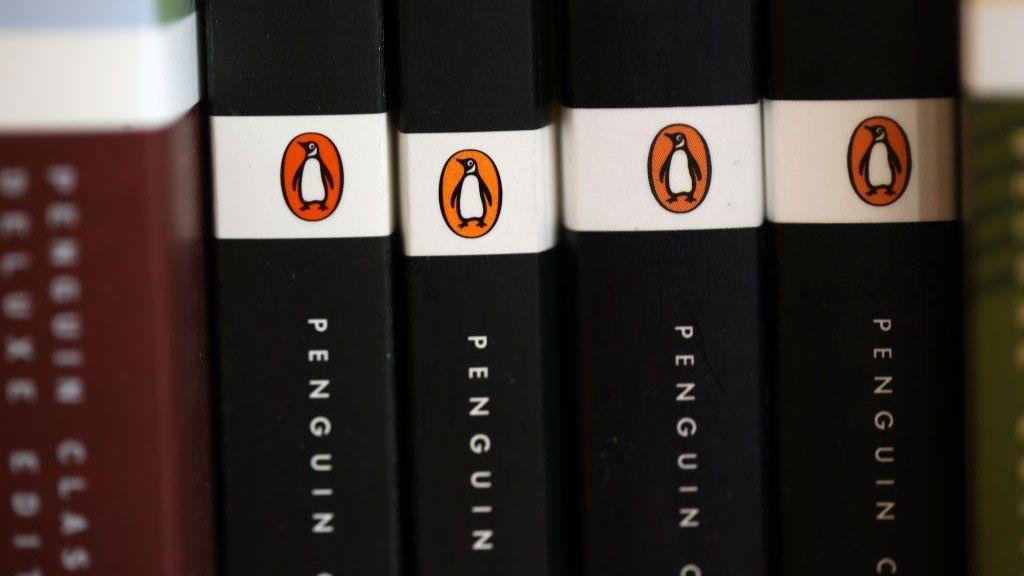
'It's just dreamy'
The Northamptonshire archive charts the evolution of publishing as well as literature.
In 2013, Penguin merged with Random House, bringing together dozens of imprints under one roof, including Ebury, Transworld and Quadrille.
"It's just dreamy. There are so many books here. I'm so distracted," says Zainab Juma, head of brand for Penguin.

Zainab Juma says the publisher's longevity is down to "believing that books are for everyone"
Visiting the archive for the first time, her eyes alight on Mario Mazzucchelli's The Nun of Monza.
"You don't expect the blurb on the back of a book about a nun to contain the word "depravity' in the first 10 words, so now I just need to read this!" she says.
"Penguin's longevity is down to believing that books are for everyone. You don't get to be as gutsy - pioneering mainstream sci-fi in the 60s or putting out the first major bonkbuster in the 80s - unless you believe books are for everyone.
"And that's the story of Penguin."
Inside the house of a billion words
Rushden is home to the Penguin Random House UK archive, which contains 1.5 million books.
Get in touch
Do you have a story suggestion for Northamptonshire?
Follow Northamptonshire news on BBC Sounds, Facebook, external, Instagram, external and X, external.
Related topics
More related stories
- Published24 April

- Published12 March

- Published5 April 2013